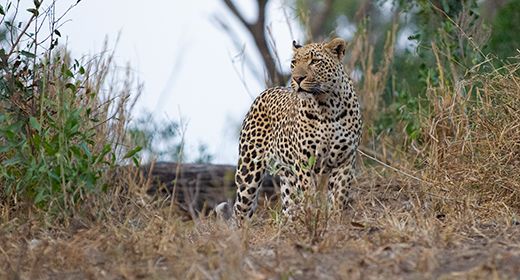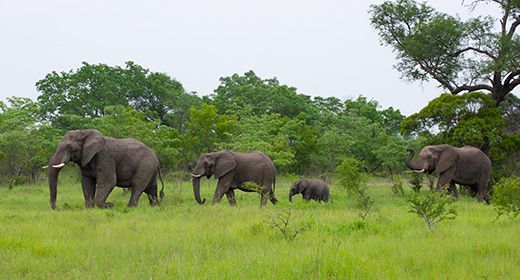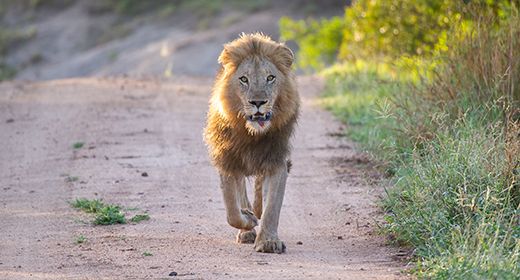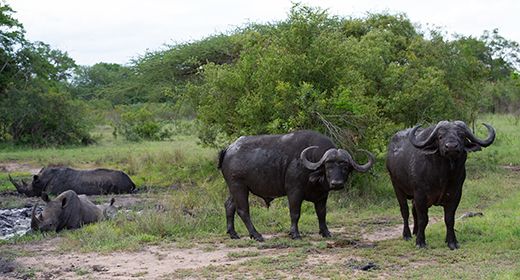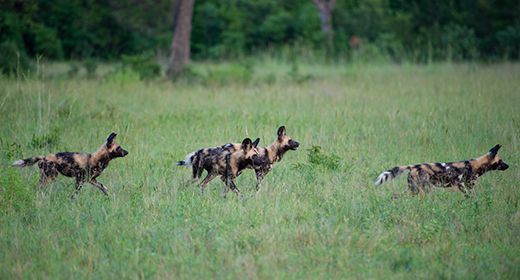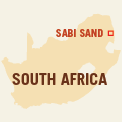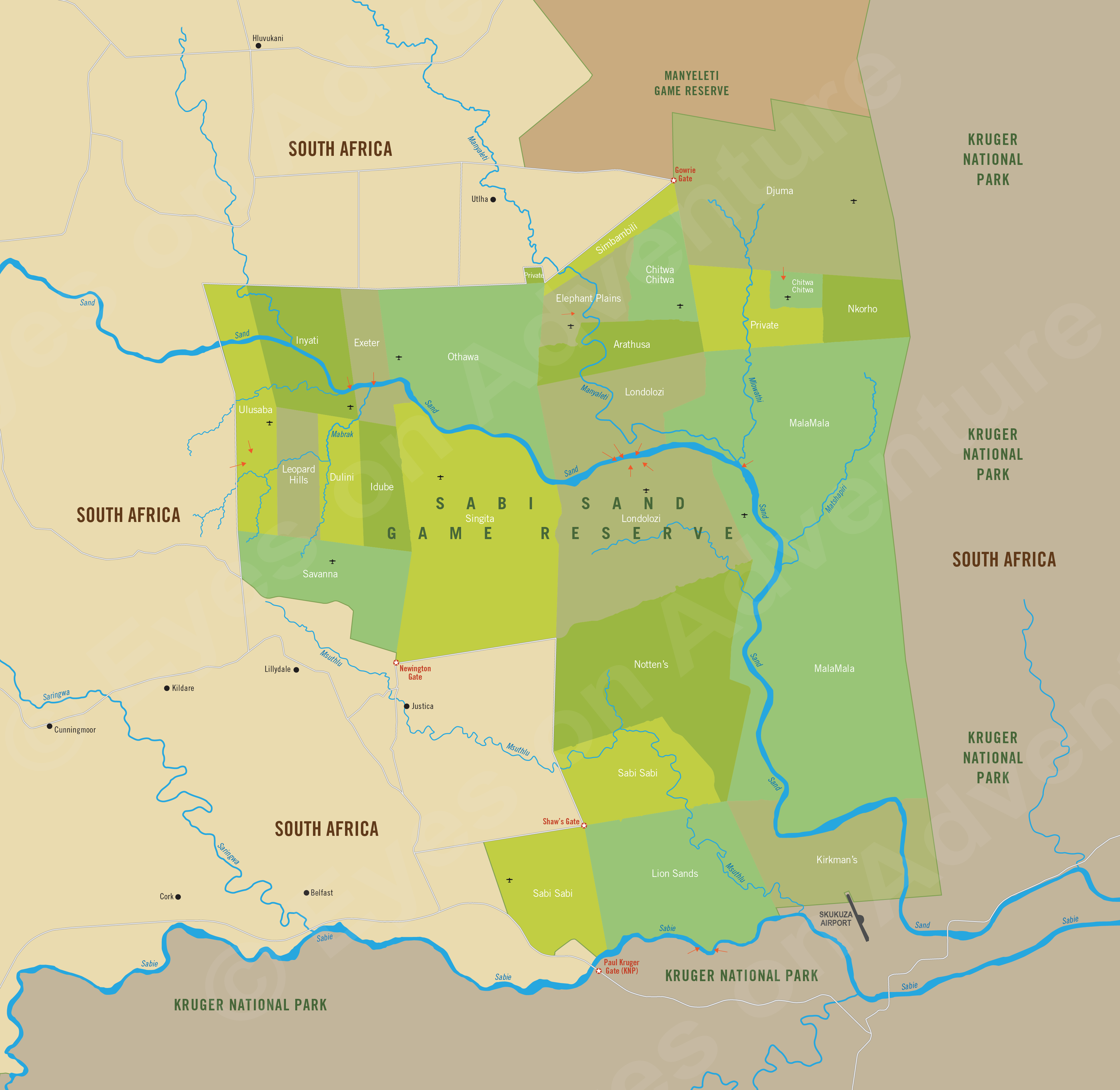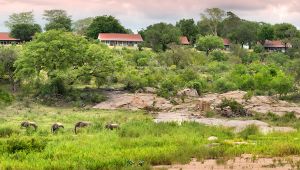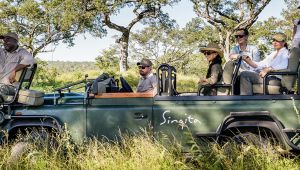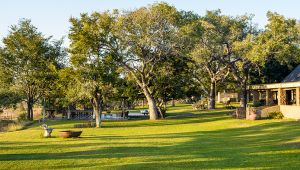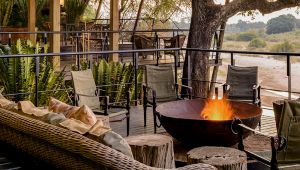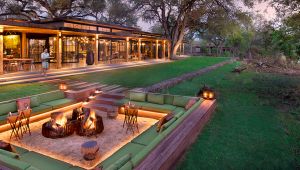Sabi Sand Reserve
(incl. MalaMala, Singita, Londolozi, Sabi Sabi, Ulusaba, Lion Sands)
Region Links: Cape Peninsula, Cape Town, Cape West Coast, Cape Winelands, Eastern Cape, Garden Route, Gauteng Province, Johannesburg, Kruger Park & Lowveld, Kruger Private Reserves, KwaZulu-Natal, Madikwe, Overberg & Whale Coast, Pilanesberg & Sun City, Sabi Sand Reserve
Highlights
- Renowned for the best leopard viewing in all of Africa
- See Africa's Big Five animals - often on a single game drive
- Great game viewing, excellent guides and no crowds
- Wide selection of safari lodges, all offering an exclusive experience
EOA Recommends: Leopard Hills, Londolozi Varty Camp, MalaMala Main Camp, Sabi Sabi Bush Lodge, Singita Boulders Lodge
South Africa's Sabi Sand Game Reserve has one of the highest wildlife densities in southern Africa. It is also undoubtedly the best place to see Africa's Big Five animals (lion, leopard, elephant, buffalo, rhino) and guests regularly see all five on a single game drive!
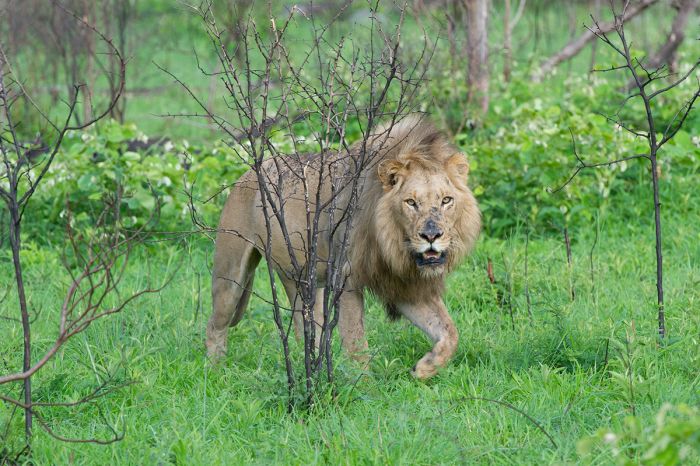
Male lion in South Africa's Sabi Sand Reserve (Copyright © James Weis).
The reserve covers 154 000 acres (240 sq miles) of prime wildlife country, including two rivers, the Sabie River, which forms part of the southern border and the Sand River, which cuts southeast through the heart of the reserve.
The forested areas along the Sand river provide superb habitat for leopards, for which the Sabi Sand has become famous. Most of leopards in the Sabi Sand, and there are many, are individually known by the rangers and repeat guests.
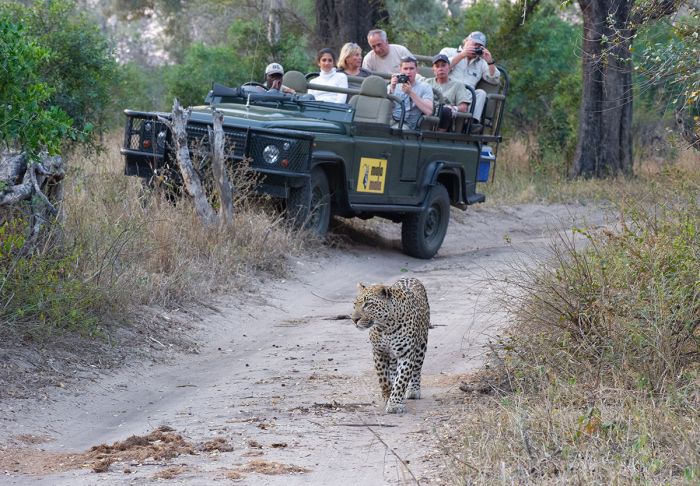
Leopard and game drive at MalaMala (Copyright © James Weis).
Within the Sabi Sand are numerous private safari lodges offering exclusive safaris and superb guiding. Renowned camps such as MalaMala, Singita, Londolozi and Sabi Sabi have some of the reserve's best game viewing land, but staying at any of the safari camps here promises a spectacular wildlife experience.
The Sabi Sand is contiguous with the Kruger National Park (the fence separating them was removed in 1993) and the wildlife moves freely between the two reserves, creating a massive ecosystem.
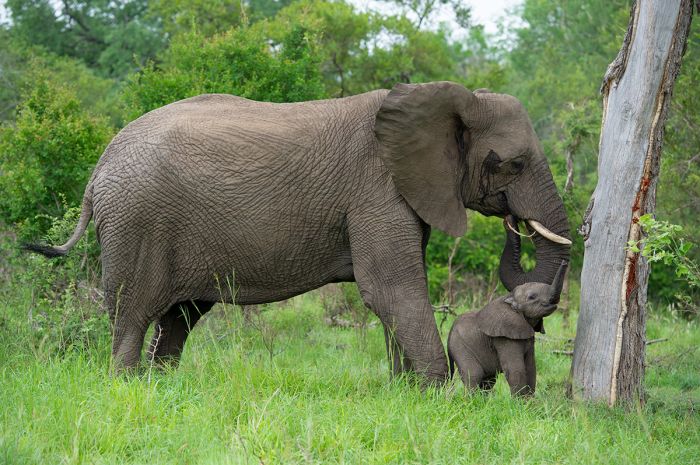
Elephant and calf in the lush, green season (Copyright © James Weis).
Read More...
Game Viewing, History, Properties, Wildlife
History
The land that makes up the Sabi Sand Reserve was originally part of the larger Sabi Game Reserve, which was proclaimed in 1898 to control the unregulated hunting that was decimating the region's wildlife. The huge reserve included what is today the Kruger National Park. More land was added to the growing reserve over the ensuing years and in 1926, the Kruger National Park was officially proclaimed as South Africa's first national park.
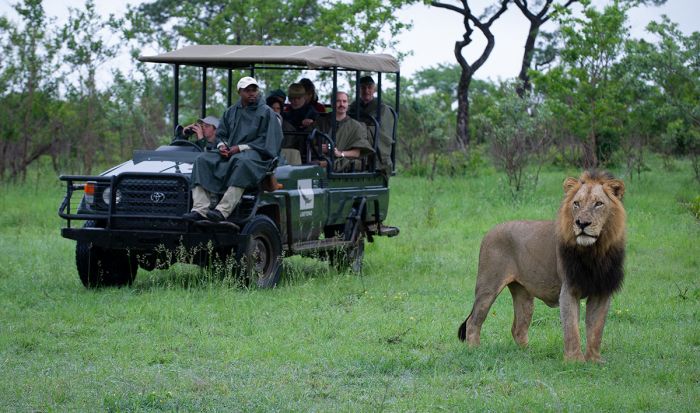
A male lion at Exeter Reserve in the Sabi Sand (Copyright © James Weis).
The privately-owned land to the west of Kruger, including the Sabi Sand land, was excluded from the new national park. The Sabi Sand land was surveyed and sold off in 'plots' to wealthier South Africans. This was wild bush country and these land 'farms' were mostly used for getaways and winter hunting resorts by the owners.
In 1948, a group of fourteen of these landowners decided to combine their properties into the first private nature reserve in South Africa, the Sabi Sand Wildtuin. Several lodges were opened to the public for game viewing.
Kruger National Park had been fenced since the early 1960s (in a failed attempt to prevent the spread of foot-and-mouth disease) to cattle living outside the national park. The 50-kilometer-long fence between Kruger National Park and the Sabi Sand Reserve was removed in 1993, so that wildlife in the two nature sanctuaries could roam freely.
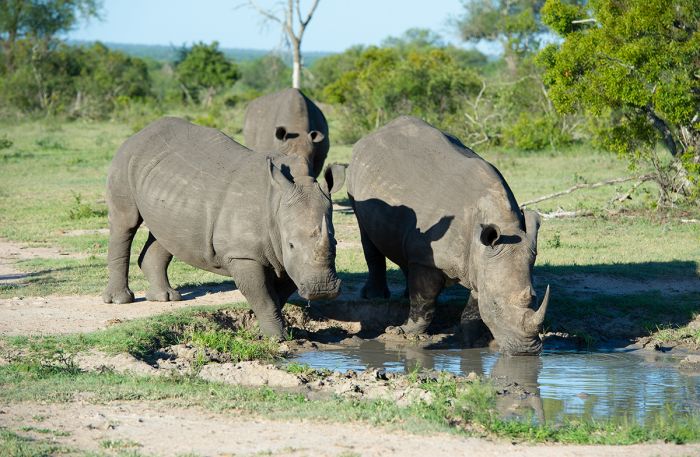
White rhinos in the Sabi Sand Reserve (Copyright © James Weis).
Properties
The various properties within the Sabi Sand Game Reserve are unfenced between one another and are separated by unpaved roads or rivers as their boundaries. The properties manage their own land as individual private reserves and staying at one of the lodges in the reserve, generally means that your game drives are conducted exclusively within the boundaries of the land for that lodge.
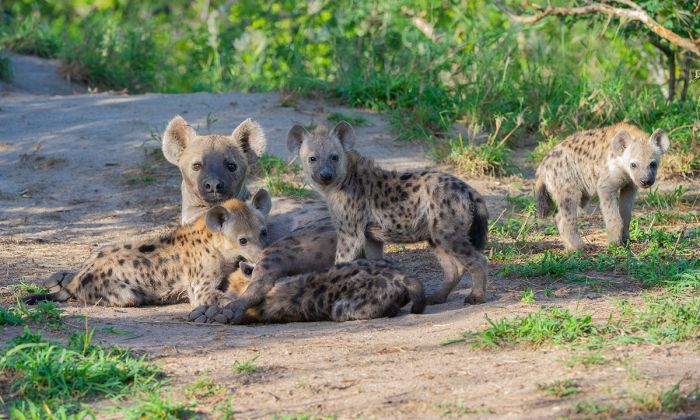
Spotted hyenas at their den (Copyright © James Weis).
The largest properties are those of MalaMala, Londolozi and Singita. Other significant properties include Nottens, Sabi Sabi, Lion Sands, Ulusaba and more.
MalaMala is the largest single private reserve within the Sabi Sand and the first to accept paying tourists. MalaMala enjoys 130 sq kms of land, including 20 kms of prime Sand River frontage on both side of the river. It is also one of the few reserves in the Sabi Sand with no fences on any of its boundaries. MalaMala has two safari camps.
Singita and Londolozi also enjoy large prime wildlife locations straddling the Sand River and both offer exclusive wildlife experiences and several lodges on each property.
The excellent wildlife experience combined with the exclusive accommodations results in untold numbers of loyal guests returning to their favorite safari camps in the reserve year after year.
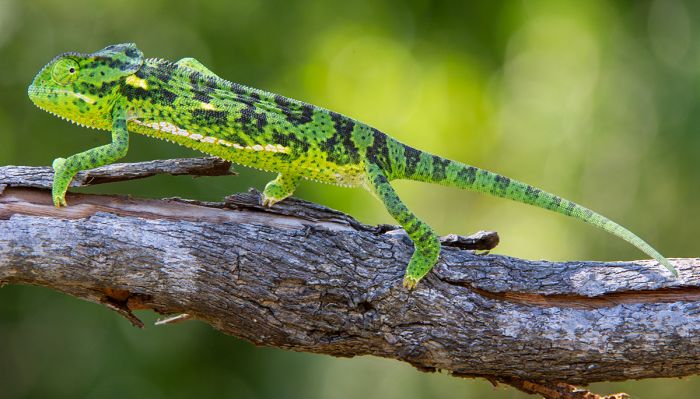
Flap-necked chameleon in the Sabi Sand Game Reserve (Copyright © James Weis).
Game Viewing
The high density of wildlife combined with the excellent guiding in the Sabi Sand means that the quality of game viewing experience is arguably unmatched anywhere in Southern Africa.
The experience in the Sabi Sand Reserve is in sharp contrast to that of guests staying in the Kruger National Park to the west, where off-road drives are prohibited, paved roads become congested with self-driving tourists, and the camps are far more humble.
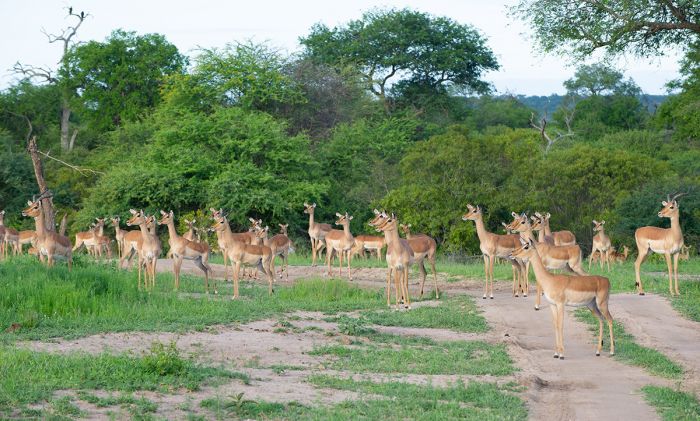
Herd of impala in the Sabi Sand (Copyright © James Weis).
Facilities and guiding at the safari lodges in the reserve are top-notch and because the lodges and land are privately owned and managed, there are no reserve restrictions in terms of off-road driving or night drives. Following a leopard as it hunts through the bush while your ranger/guide carefully navigates the 4WD vehicle around trees and other obstacles is a memorable experience!
Wildlife sightings within the entire reserve are strictly managed, so that the number of vehicles permitted at an individual sighting is restricted (generally three vehicles max for a big cat for example). This reduces stress for the animals and also makes for a more enjoyable experience for guests.
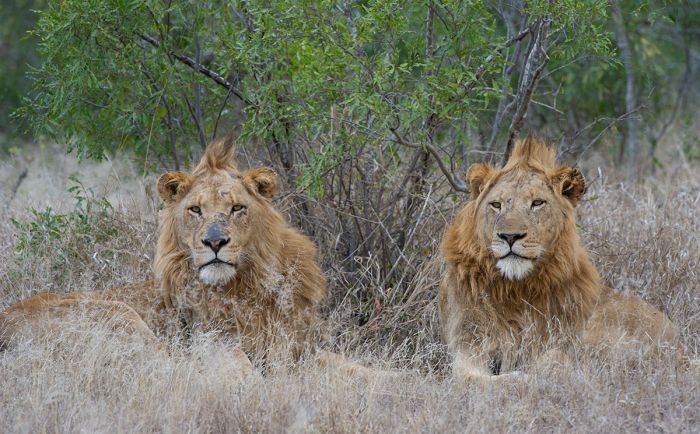
Male lions in the Sabi Sand Reserve (Copyright © James Weis).
The guides at the various properties communicate with each other via headsets and thereby manage game sightings in a fairly unnoticeable way to guests. In fact, the high density of wildlife in the reserve means that guests are often taken from one sighting to another and sightings of all five of Africa's Big Five (lion, leopard, elephant, buffalo, rhino) in a single game drive is not uncommon.
Many of the smaller properties, especially those in the western and northern sectors of the reserve have agreements with their neighboring properties to allow traversing rights on each other's land. This in effect increases the game viewing area for their guests.
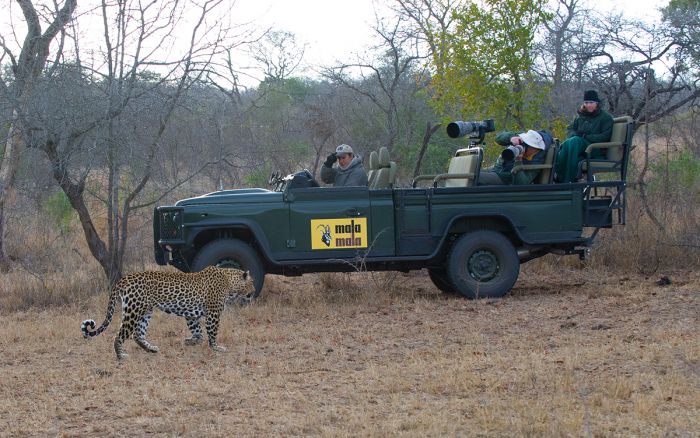
Game drive and leopard sighting (Copyright © James Weis).
Generally speaking, the density of guests and safari vehicles in the west and north sectors of the reserve is higher than in the larger properties located in the center and south sectors of the reserve.
Wildlife
The Sabi Sand is renowned for its abundant leopards and is undoubtedly the most reliable place in Africa to see and spend time with these beautiful and usually elusive cats. The reserve is also home to numerous prides of lions and witnessing lion pride dynamics is one of the highlights of a long stay here.
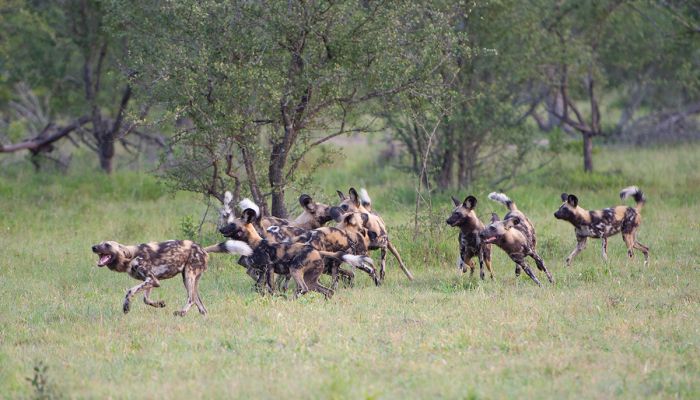
African wild dogs in the Sabi Sand Reserve (Copyright © James Weis).
The endangered African wild dogs are seen occasionally, especially in the central and eastern side of the reserve as the packs move between Kruger and the Sabi Sand and sometimes den inside the reserve.
Spotted hyena are here in good numbers, as are both black-backed and side-striped jackal. Cheetah are seen on occasion, but numbers are not high due to the high density of lion.
There are thousands of elephants that move between the Sabi Sand and Kruger and impressively large bulls and breeding herds are almost a sure bet on every game drive.
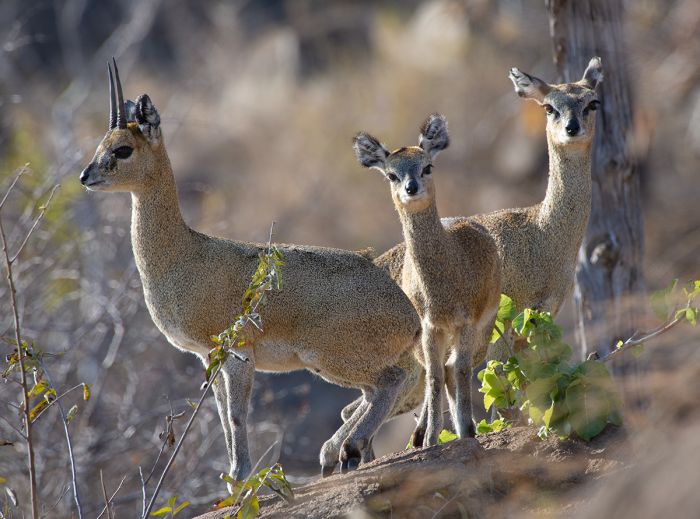
A family of klipspringers - male, female and youngster (Copyright © James Weis).
Both black and white rhino species are here in good numbers, but white rhino are the most commonly seen. Other herbivores with healthy populations in the reserve include zebra, giraffe, buffalo, nyala, waterbuck, reedbuck, bushbuck, impala, klipspringer, and warthog.
Crocodiles are hippos are found in the rivers and sometimes in the larger seasonal rain pans.
Birding is superb, especially during the spring and summer (November thru March) when numerous migrants arrive to breed in the region.
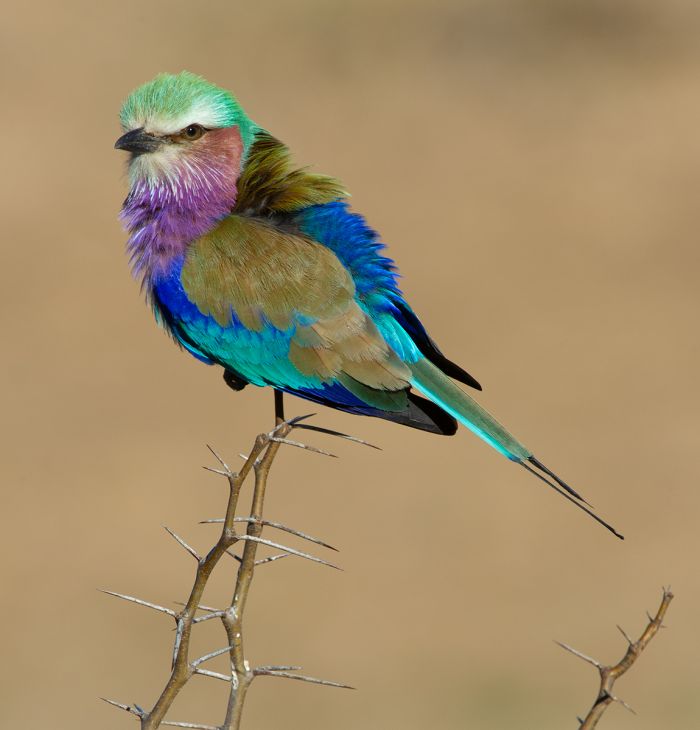
Lilac-breasted roller (Copyright © James Weis).
Read More...
Great Good Fair Poor
- Jan
- Feb
- Mar
- Apr
- May
- Jun
- Jul
- Aug
- Sep
- Oct
- Nov
- Dec
The Sabi Sand Reserve offers good to excellent wildlife viewing year-round but summer rains may interfere when they set in and on especially wet years.
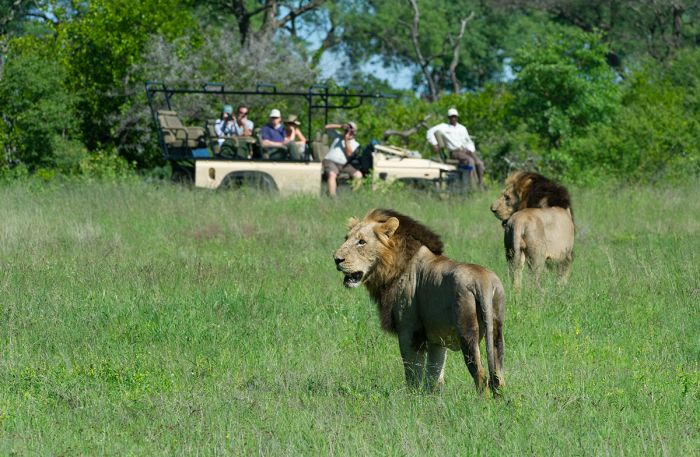
Male lions during seen during December's greenery (Copyright © James Weis).
The animals do not migrate in this region, but finding them can be more difficult when the grasses grow high and water availability is good away from the rivers.
The winter is dry and cool and wildlife may be easier to find as rain water is evaporating and the rivers and deeper waterholes become more frequently visited by the animals.
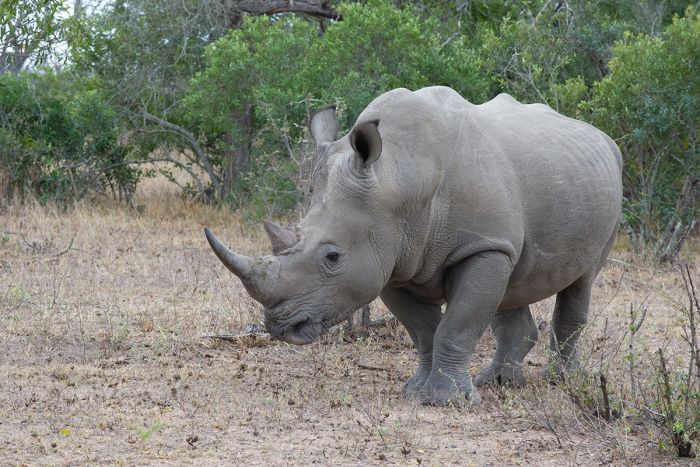
White rhino photographed in winter (Copyright © James Weis).
SUMMER AND RAINS
Spring and summer is the rainy season in the region and the land awaits the needed precipitation after the long dry winter. Wildlife viewing is still good between the rain showers and photographers will love the added colors in the landscape and skies.
Migrant birds arrive in huge numbers and some herbivores time their breeding such that babies are born when the grass is richest. Tourists may shy away from this season and, as such, prices and availability at camps may be better.
The majority of the rain falls between November and March, with January and February being the wettest months. Temperatures are hot and humid, with daytime temps averaging 90°F/30°C, but reaching as high as 104°F/40°C on some days.
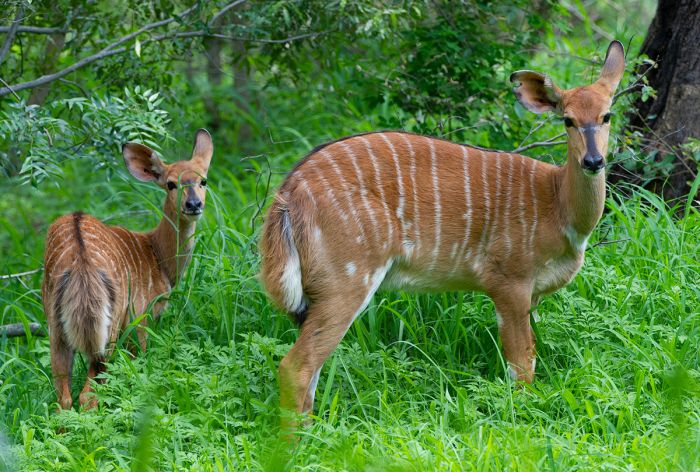
Nyala with her calf in the summer (Copyright © James Weis).
The first rains occur as afternoon showers starting in October and November, becoming more frequent as the weeks progress. Morning temps average 64°F/18°C to 86°F/30°C by mid-afternoon. This is a lovely time of year, with green grass sprouting and summer migratory birds beginning to arrive. Wildlife still congregates along the permanent water sources.
December thru February are the wettest months and also the highest temps. Humidity is high and afternoons can be very hot, averaging 88°F/31°C but can go as high as 104°F./40°C. The landscape is lush and photography can be incredible on days where it doesn't rain. Impala and warthog numbers are up after the spring breeding cycle and predators are enjoying the bounty.
March and April still experience rain but to a much lesser degree. Temperatures are dropping, with overnight temps averaging 64°F/18°C and daytime temps a comfortable 84°F/29°C. The grass is tall and summer migrant birds are departing north for the coming winter.
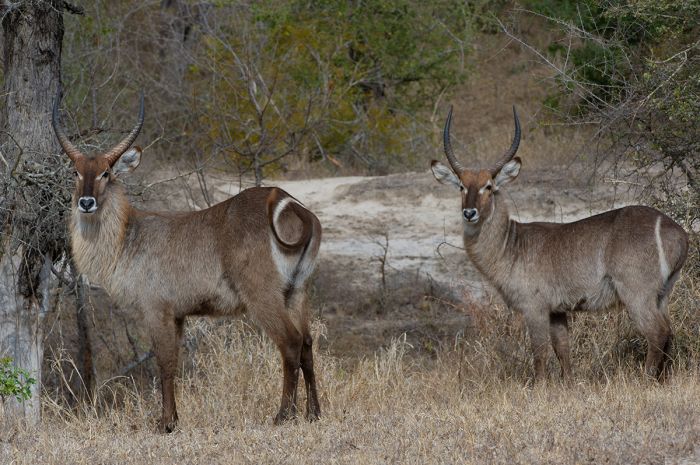
Waterbucks in the dry winter season (Copyright © James Weis).
Winter / Dry Season
The winter months are dry and the temps are comfortable. Game viewing gets better and better as the season progresses and the last of the rain-filled waterholes become drier and drier. At this time, the animals remain close to the rivers and scattered permanent water holes, making them easier to see.
Warm clothing is advised for the chilly morning game drives in the open vehicles.
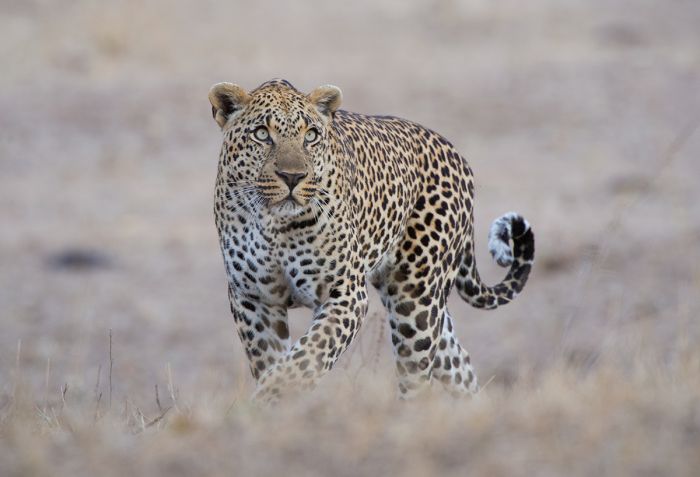
A male leopard seen in August (Copyright © James Weis).
May is the transitional month between the end of fall and the start of winter. Morning temps are around 54°F/12°C and afternoons average 79°F/26°C.
June thru August are winter and rains are very uncommon. Mornings can be quite cold, with temps at 48°F/9°C. Afternoons are typically sunny and cloudless and temps average 77°F/25°C. Game viewing is superb, especially along the rivers and at any permanent water holes.
September is a lovely month in terms of both wildlife viewing and temperatures. A few brief rains may fall, but the days are typically beautiful, with afternoon temps averaging 82°F/28°C and mornings a comfortable 57°F/14°C. This is one of the busiest months for tourists and most lodges are booked out far in advance.
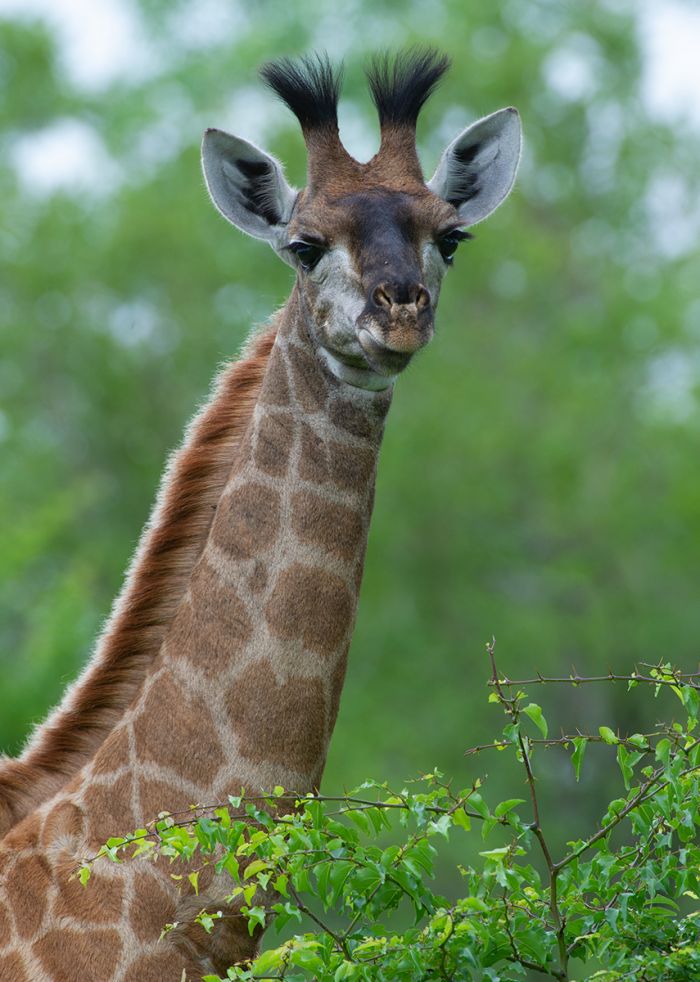
A young giraffe in the rainy season (Copyright © James Weis).
Showing 1–5 of 5 results
An original homestead dating back to the 1920s and named for one of the founders of the Sabi Sand Reserve. Evokes old-world charm in an area with outstanding wildlife viewing, including all of Africa's Big Five animals. Great location on the bank of the Sand River.…
Singita Boulders Lodge is located in the Sabi Sand Game Reserve bordering Kruger National Park. The reserve is renowned for its outstanding wildlife viewing, including all of Africa's Big Five animals.…
Singita Castleton is a private-use homestead located in the Sabi Sand Game Reserve bordering Kruger National Park. The reserve is renowned for its outstanding wildlife viewing, including all of Africa's Big Five animals.…
Singita Ebony Lodge is located in the Sabi Sand Game Reserve bordering Kruger National Park. The reserve is renowned for its outstanding wildlife viewing, including all of Africa's Big Five animals.…




